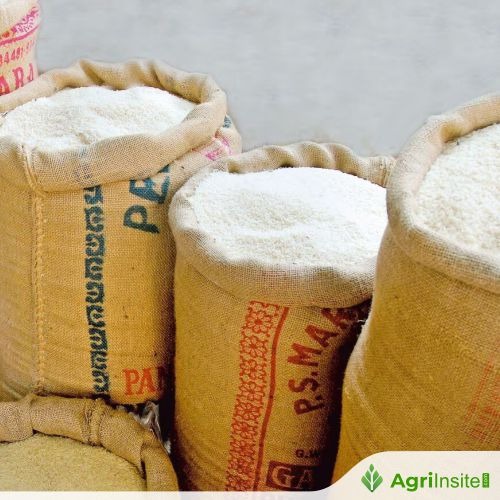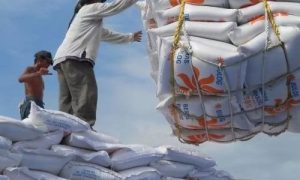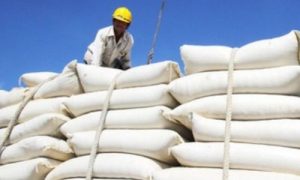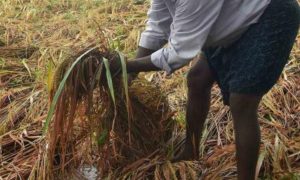Bangladesh : Rice shortage unlikely this year due to steady supply, strong stocks

Bangladesh is expected to avoid a rice shortage in 2025–26, with government stocks, strong Boro procurement, and planned imports meeting the 41.73 lakh MT requirement. Distribution and safety reserves are well balanced. The government will import 4 lakh MT as a precaution for floods and support 55 lakh families with subsidised rice.
Bangladesh is unlikely to face any rice shortage during the 2025–26 fiscal year as projected demand and supply will remain well balanced, according to an official document.
Government stock levels, boosted by strong procurement during the Boro season and a proactive import strategy, are set to meet the year’s total requirement of 41.73 lakh metric tonnes including safety reserves and subsidised distribution.
Of the total demand, 31.23 lakh MT is earmarked for distribution while 10.50 lakh MT is kept as safety stock.
Currently, government stocks stand at 15.21 lakh MT leaving a net requirement of 26.52 lakh MT for the fiscal year.
The document shows that a record volume of procurement has been made in the current Boro season. Between April and June 2025, the government procured 10.84 lakh MT of rice.
An estimated 13.78 lakh MT of rice will be distributed from July to November 2025, bringing the projected stock down to 8.54 lakh MT by November.
The Aman season typically faces challenges such as floods and lower yields compared to Boro, with a smaller marketable surplus.
Over the past five Aman seasons, the government procured an average of 28,000 MT of paddy and 4.59 lakh MT of rice annually.
In the 2024–25 Aman season, the government procured 26,700 MT of paddy and 5.19 lakh MT of rice, including 5.37 lakh MT in rice form.
Between December 2025 and March 2026, another 8.83 lakh MT of rice is projected to be distributed. Under the government’s subsidised food programme, this fiscal year some 55 lakh families—up from 50 lakh last year—will receive 30 kilograms of rice per month at Tk 15 per kg for six months: August, September, October, November, February, and March.
The 2025–26 food budget includes a provision to import 9 lakh MT of rice and procure 22.29 lakh MT from domestic sources. Out of the total net requirement of 26.52 lakh MT, 22.29 lakh MT will be sourced locally.
To cover the remaining 4.23 lakh MT gap, the government has already decided to import 4 lakh MT of rice as a precautionary measure ahead of the flood-prone Aman season.
The decision was taken on July 15 at a meeting of the Food Planning and Monitoring Committee, chaired by Finance Adviser Dr. Salehuddin Ahmed at the Bangladesh Secretariat.
Briefing reporters after the meeting, Food Adviser Ali Imam Majumder said the move aims to mitigate any potential risks due to seasonal floods.
He also noted that the government has already procured 3.76 lakh MT of Boro paddy against a target of 3.50 lakh MT and collected 9.50 lakh MT of rice out of a 14 lakh MT target.
Bangladesh has maintained a cautious and adaptive approach to rice stocking over the past five years, driven by changing weather patterns, domestic production, and global market conditions.
Government data shows that rice stocks have generally remained within a stable range, fluctuating between 10 to 15 lakh metric tonnes (MT) in recent years.
The stock levels are largely influenced by the outcomes of the Boro and Aman harvests, as well as emergency imports during years of crop shortfall or natural disasters.
During 2020–21 and 2021–22, stocks saw temporary declines due to floods and COVID-19 disruptions. However, the government responded by stepping up imports and expanding procurement from local farmers.
In 2022–23 and 2023–24, stocks rebounded as domestic production improved, aided by better weather and higher procurement targets.
In the ongoing 2025–26 fiscal year, the government started with a stock of 15.21 lakh MT, one of the highest in recent memory.
To ensure food security and price stability, the government has consistently procured 20–22 lakh MT annually from local sources, with strategic imports planned during lean seasons.
The stocking strategy also supports vulnerable families through subsidized food programmes during key months.
To Read more about Rice News continue reading Agriinsite.com
Source : UNB
















